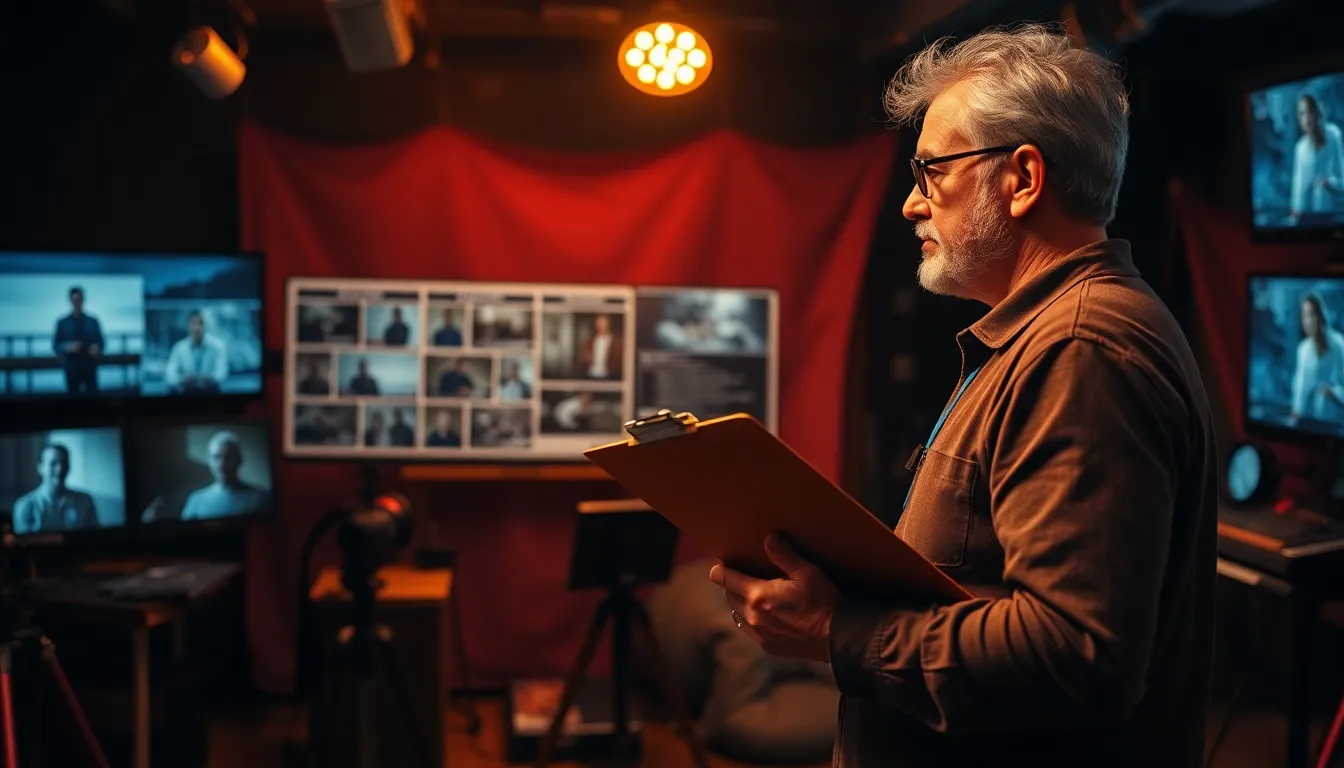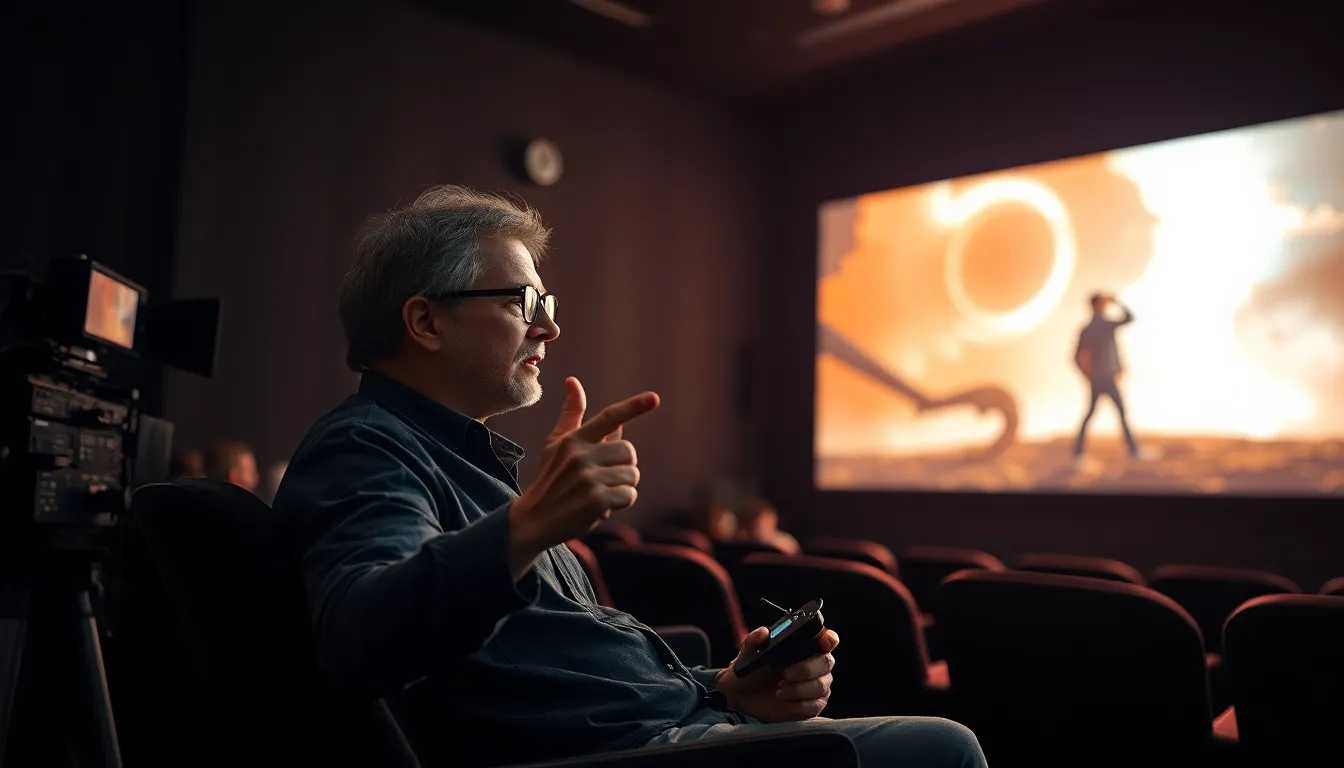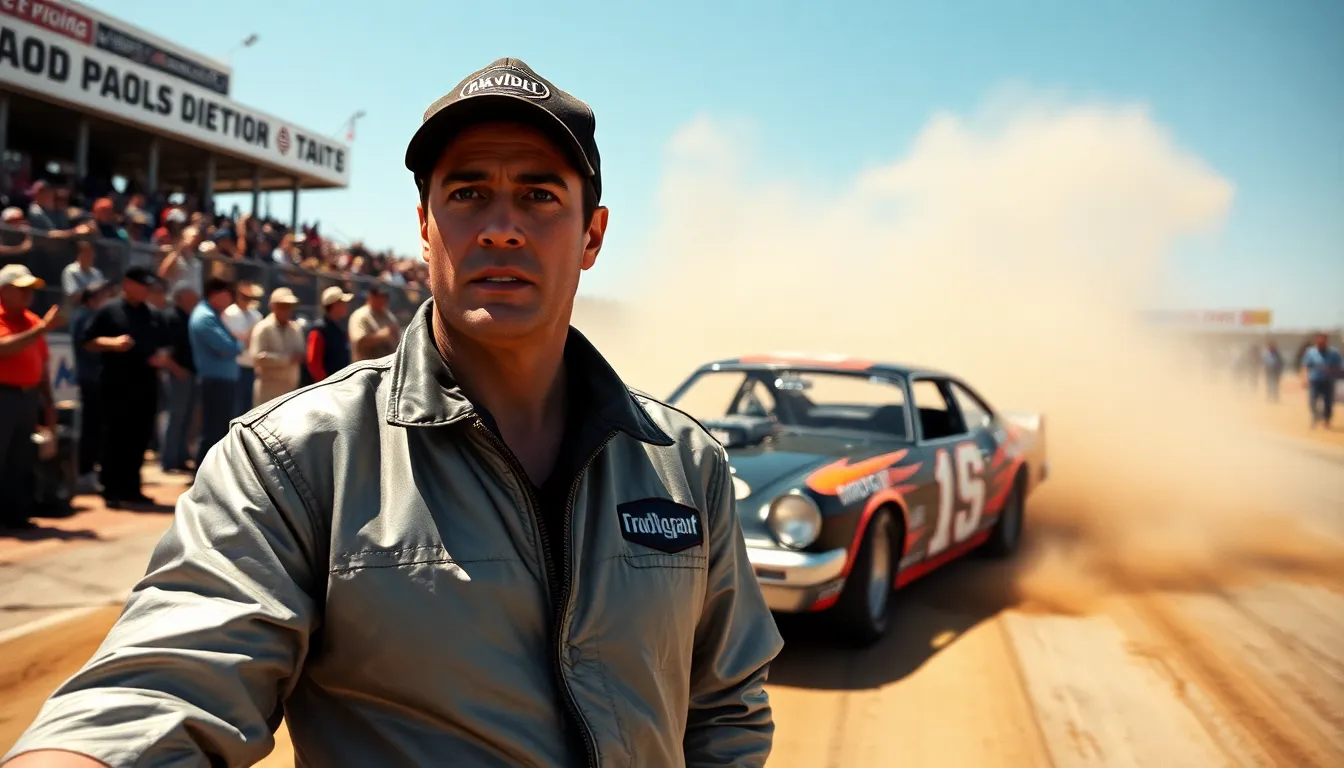Table of Contents
ToggleFlashbacks in movies are like that unexpected plot twist that keeps viewers on their toes. They whisk audiences away from the present, diving into a character’s past with all the grace of a time-traveling DeLorean. But why do filmmakers sprinkle these nostalgic nuggets throughout their narratives? It turns out, flashbacks aren’t just for dramatic effect; they’re a secret weapon for storytelling that can create tension, deepen character development, and keep viewers guessing.
Imagine watching a thriller where the hero suddenly remembers that one fateful day—cue the ominous music and a montage of cringe-worthy decisions. Flashbacks can turn a simple storyline into a rich tapestry of emotions, connecting dots that viewers didn’t even know were there. So, grab your popcorn and settle in as we explore the clever art of movie flashback usage, and discover why they’re more than just a trip down memory lane.
Overview of Movie Flashback Usage
Flashbacks serve as a critical storytelling device in cinema. They enhance narratives by providing essential context that enriches plotlines. Through flashbacks, filmmakers can depict past events that shape characters’ motivations and behaviors. Creating tension is another key function; strategic placement of flashbacks builds suspense and intrigue.
Character development receives a significant boost from these scenes, as audiences gain insight into characters’ histories and emotional states. Viewers often connect more deeply with characters when they understand their past experiences. Reveal crucial backstory elements through well-crafted flashbacks, drawing viewers into the narrative.
Different approaches exist for incorporating flashbacks into films. Some filmmakers opt for seamless transitions, engaging the audience without disrupting the flow of the story. Others may use contrasting visuals or distinct coloring to signal shifts in time, enhancing viewer engagement.
Successful use of flashbacks can transform mundane storytelling into compelling cinema. The right execution not only elevates the plot but also reinforces thematic elements, creating a layered viewing experience.
Films like “The Godfather Part II” and “Eternal Sunshine of the Spotless Mind” exemplify effective flashback usage, illustrating the technique’s versatility. Ultimately, flashbacks play a pivotal role in enriching movie narratives, making them a valuable tool for filmmakers.
Techniques in Flashback Implementation

The effectiveness of flashbacks in films often relies on specific techniques that enhance storytelling.
Narrative Structure
A nonlinear narrative structure frequently employs flashbacks to enrich the plot. Filmmakers strategically position non-chronological scenes to reveal character motivations or backstories. Such placements not only generate suspense but also maintain viewers’ interest by offering unexpected revelations. Using this approach, movies like “Pulp Fiction” create intricate relationships between characters and events. Conflicts can arise from flashbacks, driving the narrative forward while urging audiences to piece together the storyline. A well-organized narrative structure effectively deepens emotional connections and provides clarity regarding character development.
Visual Cues
Visual cues are essential for signaling flashbacks to the audience. Common techniques include changes in color grading, soft focus, or distinct transitions, which separate the present from the past. These visual alterations help audiences understand shifts in time. For instance, desaturated colors may indicate a more somber or reflective memory. Incorporating specific imagery, such as objects or locations, can anchor viewers in the memory being portrayed. These cues facilitate a seamless experience, allowing viewers to engage with the storyline without confusion. Such thoughtful visual strategies strengthen the impact of flashbacks and enhance overall narrative coherence.
Purpose of Flashbacks in Film
Flashbacks play a significant role in enhancing storytelling in movies. They provide valuable insights that enrich both characters and plotlines.
Character Development
Flashbacks deepen character exploration. By revealing a character’s past experiences, filmmakers create empathy and understanding in the audience. Audiences connect with characters on a personal level, as seeing pivotal moments in their lives can explain their current behaviors. This technique allows viewers to witness transformations or traumas that shape motivations. Films like “The Godfather Part II” employ well-timed flashbacks, illustrating how past decisions influence present actions. Such character exploration often leads to more dynamic and memorable portrayals.
Plot Advancement
Flashbacks effectively propel the narrative forward. By providing essential context, they clarify characters’ motivations and unravel complex storylines. Viewers gain crucial backstory knowledge, allowing for better comprehension of plot dynamics. This technique builds suspense and intrigue, as audiences anticipate revelations that affect the present timeline. In “Eternal Sunshine of the Spotless Mind,” flashbacks reveal underlying emotions and connections, enhancing the overall narrative structure. Well-placed flashbacks serve not only as storytelling devices but also as mechanisms that drive the plot toward its climax.
Examples of Effective Flashback Usage
Flashbacks enrich movie storytelling by providing vital context and deepening character exploration. They often reveal significant moments that shape the narrative and characters.
Classic Films
Many classic films utilize flashbacks to enhance plot and character depth. “Citizen Kane” exemplifies this technique, revealing the backstory of Charles Foster Kane through a series of flashbacks that explore his relationships and motivations. “Casablanca” employs flashbacks effectively to convey the emotional weight of Rick and Ilsa’s past, enhancing the audience’s understanding of their present choices. “The Godfather Part II” uses a parallel narrative, interspersing flashbacks with the current storyline to illustrate Vito Corleone’s rise to power, revealing critical insights into both protagonists’ journeys. These films not only demonstrate the power of flashbacks but show how they can drive narratives and engage viewers emotionally.
Modern Cinema
Modern films continue to leverage flashbacks for dramatic impact and storytelling depth. “Inception” employs a complex narrative structure featuring flashbacks that clarify motivations and enhance the emotional stakes of the plot. “Memento” presents its story in a non-linear fashion, with flashbacks playing a crucial role in revealing the main character’s fragmented memories. “Eternal Sunshine of the Spotless Mind” uses flashbacks to illustrate the relationship between Joel and Clementine, allowing viewers to grasp their evolving emotional states. These contemporary examples highlight how modern filmmakers effectively adapt flashback techniques to create intricate, engaging narratives that resonate with audiences.
Critiques and Challenges of Flashbacks
Critiques of flashbacks often center on their potential to confuse audiences. Many filmmakers face challenges when using this technique, particularly in maintaining narrative coherence. A poorly executed flashback can disrupt pacing and lead to viewer disengagement.
Balancing clarity with artistic expression presents another challenge. Directors must ensure that the flashback serves a purpose rather than indulging in nostalgia. When this balance tilts, filmmakers risk overwhelming audiences with unnecessary information.
Cultural context affects the reception of flashbacks as well. In some cultures, linear storytelling dominates, which can make nonlinear narratives feel disjointed. Audience expectations influence how effectively flashbacks convey emotions and plot points.
Character development relies heavily on effective flashback usage. When done right, flashbacks deepen understanding but can also complicate character arcs if overused. Audiences may struggle to grasp motivations if they encounter too many fragmented scenes.
Timing plays a crucial role in the effectiveness of flashbacks. Inserted at the wrong moment, they can create confusion rather than clarity. Strategic placement enhances emotional impact and helps to unravel complex storylines.
Critics often highlight that not all films benefit from flashbacks. Certain narratives remain stronger when keeping a linear progression, ensuring clarity and momentum. Thus, filmmakers must evaluate whether this technique complements their storytelling goals.
Flashback techniques foster rich cinematic experiences but also come with risks. Recognizing these challenges allows filmmakers to explore innovative ways to engage audiences without sacrificing narrative integrity.
Flashbacks hold a unique power in filmmaking that can elevate narratives and deepen emotional connections. When used effectively they create a richer viewing experience that resonates with audiences. The technique not only reveals character motivations but also propels the plot forward, adding layers of complexity.
Successful filmmakers understand the balance between clarity and artistic expression. They harness flashbacks to enhance storytelling while avoiding pitfalls that can confuse viewers. As demonstrated in various films, the strategic use of flashbacks can transform a simple narrative into a compelling exploration of time and memory.
Ultimately flashbacks are more than just nostalgic devices; they are essential tools that enrich cinematic storytelling and engage viewers on multiple levels.



